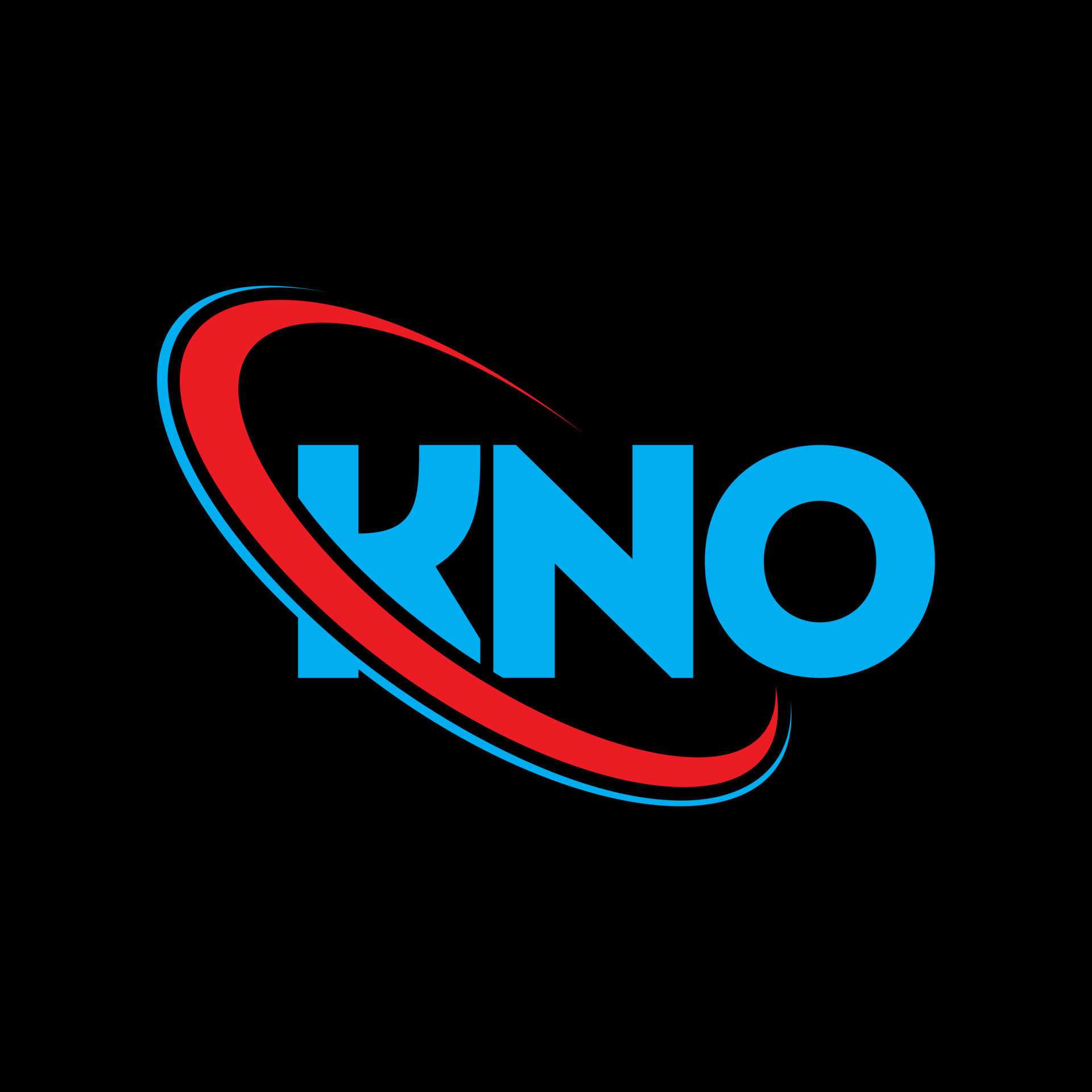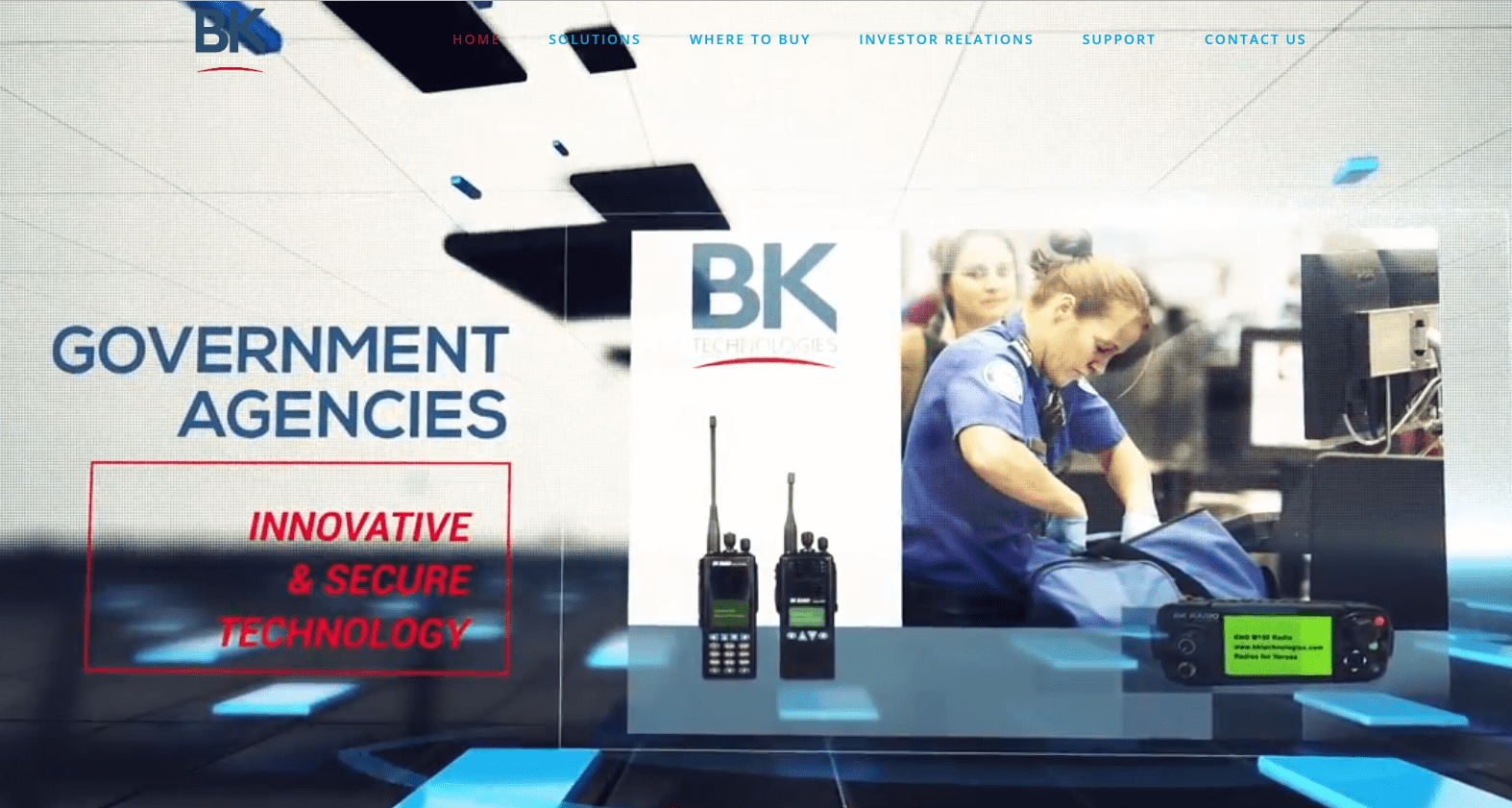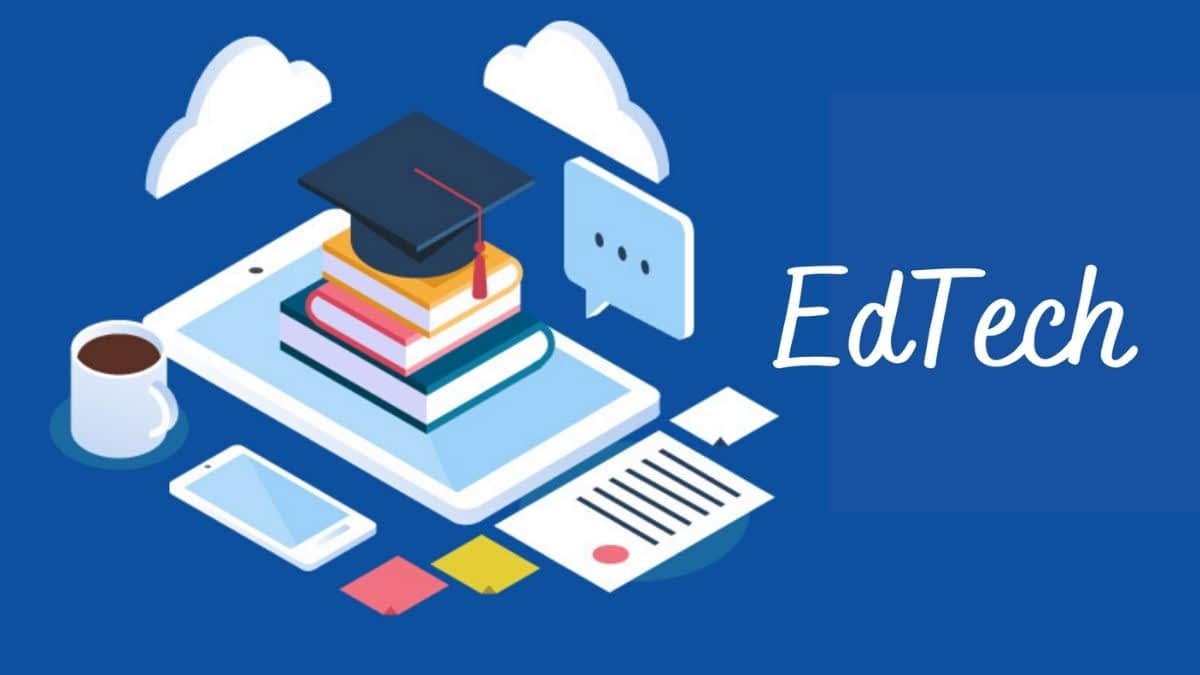Top 10 Failed Edtech Startups in 2022

Top 10 Failed Edtech Startups in 2022
EdTech, which stands for “education and technology,” is the name given to gear and software that are intended to enhance teacher-led classroom learning and raise student achievement levels. Although EdTech is still in its infancy, it already offers promise as a way to adapt a curriculum to a student’s level of proficiency by delivering and reinforcing new material at a speed the student can handle.
KEY LESSONS
The term “education technology,” or “EdTech,” refers to modern technological applications in the classroom. Some examples of EdTech are interactive whiteboards and projection screens in the classroom, online material delivery, and MOOCs.
EdTech seeks to increase customized learning, better student results, and lighten the load on teachers. While many people applaud the use of technology within the classroom, others worry that it is utilitarian and may result in tracking and collecting data on both students and teachers.
Knowledge of edtech
EdTech is a hotly debated subject. There are worries that EdTech is an effort to phase out specific in-class tasks to cut expenses because a sizable component of the educational system is unionized. The developers of EdTech highlight the software’s and technology’s capacity for improvement, which frees the instructor to take on more of a facilitator role. Due to time limits, it can be challenging for an instructor to follow the curriculum, stay up with lower-level students, and keep the class’s top students interested in their work.
Education technology (EdTech) has the potential to improve results for both the class as a whole and individual students by automating the evaluation of aptitude and modification of difficulty.
There have been two phases of deployment for technology in the classroom. The initial step was the addition of hardware to the lecture hall. The topic of improving the software’s coordination and use of the hardware has inevitably come up. EdTech includes these software programs. Many of these are cloud-based and use algorithms to determine how quickly or slowly to move a learner along various learning objectives based on studies in education.
Technology is used by Massive Online Open Online Courses (MOOCs) to connect with a substantial global online student population. These courses aim to deliver education in a method that suits the customer, even if they also have drawbacks, including poor completion rates.
EdTech Issues
Many concerns about edtech are based on a further-off future in which software may oversee the entirety of courses. The field is now using analytics to assess a student’s proficiency across the curriculum, allowing them to advance more swiftly in some areas and taking more time to strengthen their weaknesses. With knowledge of each student’s strengths and limitations supplied by the EdTech program, the instructor serves as a guide and problem solver while each student completes a personalized curriculum.
Even in terms of the most fundamental topics like algebra or reading and writing, EdTech remains in its infancy. The design of EdTech faces many difficulties. The most significant challenge is accommodating various learning preferences in the classroom. At the moment, EdTech is often offered via a laptop or tablet, creating a read-and-respond learning environment. According to critics, this learning approach may disadvantage other learners, such as kinesthetic and auditory learners. EdTech will advance as more people use it and provide input, just like any other emerging technology area.
However, EdTech still has to overcome more societal barriers. Parents and students alike look on teachers to foster a social climate that supports teamwork and other aspects outside the purview of EdTech. Future classrooms may rely mainly on EdTech to handle the labor-intensive tasks of course design. Still, many parents and teachers continue to perceive value in the group set apart from the purely academic objectives. Advocates claim that rather than completely replacing the current approach, EdTech seeks to enhance it, like many other advancements in education.
When creating a new firm, there are many factors to consider, including how to verify your idea, where to find finance, and what characteristics the product should have.
Finding a customer that will purchase your solution even before they know what it is might be difficult. 90% of businesses will, however, fail and close.
This article lists ten failed EdTech firms and provides explanations of why they failed in India.
1) Kno
Kno introduced E-textbooks with two panels. Despite financing $80 million, the company’s chances of expanding decreased once Apple unveiled its recognizable iPad. Babur Habib and Osman Rashid were the founders. The company was based in the United States, opened in 2009, closed in 2013, had more than 10,000 workers, and had more than $50 million in funding. The competition was the specific reason for the collapse.
2. Rafter
Rafter sold college students course materials. They had to contend with fierce rivalry and logistical, economic, and market difficulties. Rafter mainly dealt with small to medium-sized institutions, which benefited from the volume discounts they could secure through Rafter. Colleges were allowed to cut the cost of books at the campus bookstore in this way, enticing students to purchase their course materials from the institution rather than from off-campus vendors.
Rafter also offered electronic textbooks, audio and video media, as well as access pass to several online course platforms, enabling educators to locate, sample, and manage course content.
3) School Gennie
Time was saved, money was held, and SchoolGennie’s solutions assisted in better school choice. They did not, however, examine the product-market fit. By offering management services that saved time, cut expenses overall, and assisted in making better administrative decisions, SchoolGennie aimed to support Indian schools and the country’s educational system as a whole in concentrating on and enhancing child development. With the introduction of its ERP (electronic records portal) platform, SchoolGennie offered services like Competitive Edge Software & Cloud Software Service to educational institutions.
Amit Gupta and Pardeep Goyal founded the company. It began in 2013 and ended in 2014.
Employees: 1–10; funding amount: $0; specific reason for failure: horrible experience.
4. Tutorspace
The goal of Tutorspree was to improve tutoring. Their plan to arrange in-person meetings between instructors and pupils proved impractical. Therefore, it was abandoned. By making it more straightforward for students to identify qualified instructors in their region, Tutorspace aims to improve how coaching is conducted. Tutorspace, sometimes referred to as “Airbnb for tutors,” matriculated from Y Combinator in 2011. In their educational market, people could sign up as students, establish their preferences, and filter so that the Tutorspace algorithm could match them with the best tutor out of the 7000 instructors on the site who are available.
Aaron Harris, Josh Abrams, and Ryan Bednar are the founders.
United States of America; started in 2010; finished in 2013; 50–100 personnel Funding Range: $1M-$10M • Particular Reason for Failure: Poor Marketing
5) 101 Studios
Video games created by 101 Studios were educational while being played. They chose a “business to professor” business model; however, even while academics approved of the concept, they refused to use it in their courses. The firm eventually folded after failing to achieve product-market fit. 101 Studios produced educational entertainment. The phrase “video games that instruct you as you play them” makes me shudder. Antibody was the name of our main game (and only one).
You took on the role of a hired soldier who would shrink to a tiny size and battle diseases inside ill people. To do this, we created a pokemon clone in which the arbitrary enemies you encountered were germs, viruses, and fungi. To remove them, real remedies would be used. Every chance encounter was a flashcard, and every kind of assault represented a different possible response on a medical school test. The idea was to make medical students’ brute-force memorization of information more fun to help them remember it.
Information about the launch
- Matt “GundayMonday” Sever is the founder.
- Nation: United States.
- Started in: Ended in Funding amount: $0 Particular reason for failure: Poor Market Fit
6. Adleaf Technologies
In 2013, Chetan Vashistth established his first startup company, “Adleaf Technologies,” a conglomerate of software development boot camps. For a while, business was booming, but repeated poor business decisions and poor money management ultimately led to the company’s death. In this interview, we will discuss the lessons Chetan had to learn the hard way.
India is the location. The year of the launch was 2013, the year of closure was 2014, the funding amount was zero, and the specific reason for failure was improper fund management.
7. Community Coders
While still in university, Kaito began Community Coders, a company that connected businesses looking for website designing and services in digital marketing with high school students. But as the months passed, it was harder to complete business, and the firm lost its way until it eventually shut down.
- Kaito Cunningham is the creator
- Country: Canada
8. DotaHaven
The creator of the defunct gaming content website DotaHaven is named Kyril. Early on, the website was profitable, raising $90k, going from 0 to 500k monthly page views in just six months, and peaking at $3.5/mo. However, in recent months, the company has failed to generate enough revenue to stay afloat; one of the causes of its collapse is that it overinvested in an unproven idea.
- The creator is Kyril Kotashev, Bulgaria
- Start date: 2018
- End date: 2020
- Funding amount: less than $100,000
- Particular reason for failure: Poor Market Fit.
- Funding amount: 0; funding period: 2018–2020; specific reason for failure: poor management.
9. Formatically
Since high school, Duncan Hamra and his closest friend Tyler have built enterprises together. They created Formatically, a fast citation generator that fizzled out. We’ll discuss what went wrong with the project and how he used the lessons learned to launch Memberstack.
- Duncan Hamra is the creator.
- Nation: United States
Beginning in 2014 and ending in 2018, with no funding and a specific reason for failure being a flawed business model.
10. KnowNet
KnowNet was a platform for tutoring. Rik and Ari were at to add their names to the failed hall of fame until a Swot saved them. The creator: Rik Ganguly. United States; started in 2014; completed in 2014; funding amount: $0; particular reason for failure: Competition
Seven frequent issues that edtech companies run against
Many factors contribute to edtech firms failing, but in this part, we’ll focus on the seven most significant ones. So let’s examine each of them individually.
1. Inadequate market analysis
There is no doubt that the educational industry offers many creative opportunities. Not all of them, though, is “must-required.” Some of those concepts are too complex to use right now.
In such a situation, entrepreneurs who enter the educational sector without conducting enough due diligence, market research, and competitive analysis find it challenging to differentiate between “must-required” and “fancy” app concepts and ultimately fail to select the latter. This is one of the leading causes why why companies never get off the ground.
2. A short temper
The edtech industry is expanding incredibly slowly, in contrast to other commercial sectors. In reality, most businesses don’t experience considerable growth until they’ve been there for five to ten years, which is very depressing. This makes it unsettling for business owners and investors who want to expand their share of the market for learning apps quickly. Even before e-learning businesses show any progress, investors and venture capitalists are infamous for being impatient and often withdrawing from their preferred endeavors.
3. There is a blurry line separating customers and consumers
Many people frequently download programs to test their capabilities and grasp the concept proof (due credit to mobile app promotion teams for this). However, very few of these “trial” customers actually make a purchase or join up for the benefits rendered by the program mentioned above. As a result, even with 10,000 or more customers on board, rapidly expanding e-learning firms are unable to generate enough income to remain viable in the competitive edtech industry.
4. Development of pointless technology
Numerous entrepreneurs have incorporated AI, AR, IoT, ML, Bitcoin, and other similar technologies into their educational apps after realizing the influence of technology on the EdTech industry. Unfortunately, many of them do not consider the advantages they offer or the client pain issues they solve. In other words, how they may support the app’s primary purpose, increase revenue, or engage the target audience.
This has increased the cost of developing apps, caused confusion among app users, and ultimately turned out to be one of the numerous reasons companies fail. Let’s examine this idea in further depth using a test case of Nova. It is a digital learning platform powered by blockchain that delivers a constructive technological revolution to the education industry.
For the benefit of both students and instructors, Appinventiv created a platform that is simple to use and intuitive. Additionally, it addresses a specific problem that LMS companies have with fake course certification.
Thus, Nova employs technology in the proper way to address the user’s pain points while also ensuring that the technology isn’t overly complicated.
5. Lack of coordination between instructors and openness
Lack of teacher participation and transparency is another factor in the commercial failure of many businesses in the education industry. The goal of these businesses is to replace instructors and other components of the current educational system. As a result, they are unable to discuss their working module with others or accept advice from instructors and others. Due to this lack of interest on the part of educational institutions and instructors, the adoption and use of these education applications (or software) ultimately fail.
6. Excessive app features
Many educational business owners include so many elements in their strategy to produce educational software that the result is an extremely complicated program. This frequently results in a worse user experience, a distraction from the program’s primary goal, and ultimately fewer odds of success.
7. Inadequate user education
Since mobile applications are the future of the field of education, the edtech business is becoming increasingly competitive over time. One result of this is that some business owners rush to invest in the creation of educational software and release new goods (or functions) that they completely ignore, whether or not the consumers find them beneficial.
They do not proactively present user guides or other training materials that may assist users in using the mobile application. As a result, they lose the market and fail to keep the intended audience.
Now that you are aware of the factors that might cause creative ideas to fail, you can see why the edtech startup did not make the list of top businesses. You’re no doubt revising your startup ideas for the education sector at this point. Actually, not quite.
It is essential to understand how to avoid such setbacks rather than giving up on the concepts of education startups if you want to make sure that your edtech company leaves a different historical impression.
How to build your business while overcoming edtech failure factors
You must adhere to some of the strategies listed below to ensure that your edtech firm succeeds in the market and joins the list of top edtech companies. These strategies will help your edtech both expand and overcome potential failure factors.
1. Conduct a market and rival analysis
As was previously said, many education companies fail due to business executives’ ignorance of market demands and rivals’ product lines. Therefore, spending time on the app discovery procedure and learning about the requirements and preferences of your intended user base is the first step in reducing the likelihood that your app will fail.
To put it another way, it’s critical to understand the problems your intended audience is having, what the current edtech applications are providing, and where they’re falling short. Determine how and when you can succeed in the learning and educational environment in this way.
2. Put KPIs first.

As previously said, many programs succeed in the quest for more downloads, but they don’t convert those downloads into subscribers. It would not be advisable to use download as the primary metric for gauging the effectiveness of your e-learning program in such a situation.
To increase app income and, subsequently, the success percentage of their edtech firm, one should look forward to reviewing several mobile app KPIs.
3. Work with educators and educational institutions
There is no disputing that educational institutions and teachers were a part of the conventional educational system even before you considered working with an education application development business and starting your startup.
They are knowledgeable about the market’s development, the obstacles and possibilities that altered the course of innovation, and more. Treating them like friends in this situation and asking for their suggestions on improving your educational mobile app’s usefulness, security, and success is still a wise move.
You must incorporate distinctive features into the on-demand tutor application to create one that distinguishes it from competitor. To comprehend pedagogy, how class technology influences the outcomes, how students truly learn, and what they anticipate, connect with the best educators and educational institutions.
Similarly, you might seek advice from a reputable investor or developer of learning apps who has experience working on various learning app initiatives.
4. Improve the current educational system
Another method to avoid edtech startup failure is to think of your concept as an essential component of the current ecosystem rather than a substitute. Be specific about it, then.
Pay attention to the problems with the current system for learning management and plan how to fix them. This will motivate those who are a part of the established ecosystem to adopt your technical breakthrough and recommend it to others. Anything that will enable more people to be targeted without spending much money on marketing.
5. Create a parallel business model
As was already said, the market for e-learning app development has a very modest rate of income generating. Therefore, picking a business strategy that enables you to compete while still making money from the app is advised.
There are essentially four various monetization tactics that might turn your organization into a genuine success while discussing the same thing right now:
- Freemium – This monetization method is the most likable one, despite the fact that many consumers still question how free apps generate money. The mobile application is available for free using this strategy. One must spend a certain sum of money on improving the experience and gaining access to additional features.
- Only Pay as You Go – As the name implies, this business model only requires consumers to pay for the products and services they utilize. Subscription – This business model, used by even the most successful tech businesses like Coursera, charges a fee for accessing the goods and services on a weekly, monthly, and annual basis.
- Enterprise Sales – Education startups may consider enterprise sales when a product requires extra training, connectivity, and customer support services.




